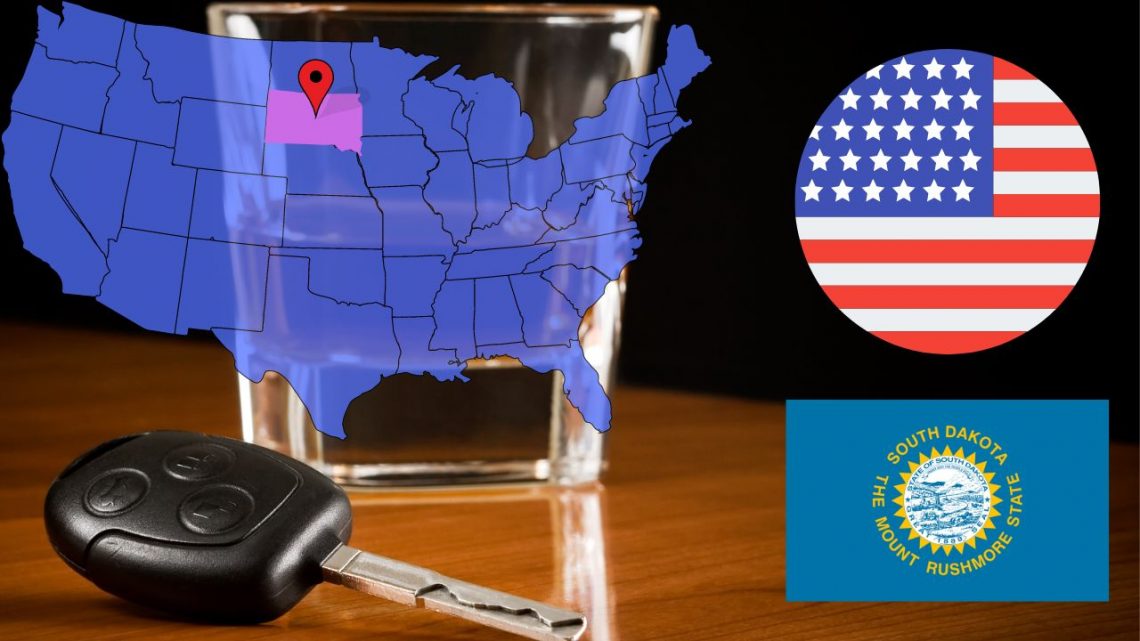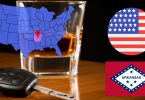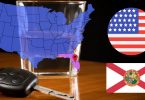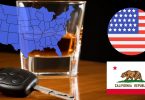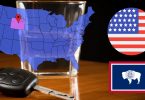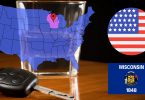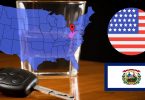In South Dakota, driving with a blood alcohol content (BAC) exceeding 0.08% (80 mg of alcohol per 100 ml of blood) is illegal. However, drivers can be arrested for DUI even with a BAC below 0.08% if evidence shows impairment while operating a vehicle.
It is essential to understand that this post seeks to increase awareness about drunk driving before we continue to explore South Dakota’s laws against impaired driving. This website does not endorse drunk driving in any state or region.
What is the legal alcohol limit for driving in South Dakota?
In South Dakota, the legal alcohol limit for driving varies based on the driver’s license type and age. These limits are set to ensure road safety and reduce the risk of alcohol-related accidents. Here’s a breakdown of the legal BAC limits for different categories of drivers:
- Regular Drivers: The legal limit is 0.08% BAC. Driving with a BAC at or above this level is considered driving under the influence (DUI).
- Commercial Drivers: For those holding a commercial driver’s license (CDL), the legal limit is lower, at 0.04% BAC, to reflect the higher responsibility associated with operating commercial vehicles.
- Minors (Under 21): South Dakota enforces a zero-tolerance policy for underage drivers. It is illegal for minors to drive with any detectable amount of alcohol in their system.
Drink and Drive Penalties and Punishments in South Dakota
In South Dakota, the legal repercussions of driving under the influence (DUI) are severe and escalate with each offense. The state enforces strict penalties to deter impaired driving and ensure public safety. Here’s an overview of the DUI penalties and punishments based on the number of offenses:
- First Offense: Classified as a Class 1 misdemeanor, resulting in the revocation of the driver’s license for no less than 30 days. The court may grant a limited driving privilege for essential needs like employment or counseling, upon showing proof of financial responsibility.
- Second Offense: Also a Class 1 misdemeanor. The driver’s license is revoked for a minimum of one year. A limited driving privilege may be reinstated after completing a chemical dependency program and meeting financial responsibility requirements. Driving without a license during this period results in a mandatory jail sentence of no less than three days.
- Third Offense: This escalates to a Class 6 felony, with license revocation for not less than one year. Similar provisions for limited driving privileges apply, but driving without a license incurs a minimum jail time of ten days. The court retains the right to modify license revocation conditions.
- Fourth Offense: A Class 5 felony, mandating a driver’s license revocation for at least two years. Conviction leads to a county jail sentence of not less than twenty days for driving without a license during this period. Successful completion of a chemical dependency program may allow for limited driving privileges.
- Fifth or Subsequent Offenses: Classified as a Class 4 felony, with a license revocation period of not less than three years. Driving without a license results in a minimum twenty-day jail sentence. The court may grant limited driving privileges after completion of a court-approved program.
- Sixth or Subsequent Offenses: If within a specific timeframe, this constitutes an aggravated offense, leading to at least six years in state correctional facility, with one year to be served on parole. The court will revoke the driver’s license for not less than three years, and driving without a license during this period results in a mandatory county jail sentence.
For each conviction, the penalties include potential jail time, license revocation, and the requirement to participate in alcohol or drug accountability programs or other monitoring tools. It’s crucial for those facing DUI charges to understand these legal consequences and seek proper legal guidance.
Given the complexity of DUI laws and the possibility of updates, it’s advisable to regularly check the official state website of South Dakota for the most current information and legal provisions regarding DUI penalties and punishments. This ensures you have the latest details on how the law may affect you or someone you know facing DUI charges.
How Can I Calculate if My Alcohol Blood Limit is Legal in South Dakota?
In South Dakota, law enforcement officers use a variety of methods to determine if a driver is operating a vehicle under the influence of alcohol. One of the primary ways is through the use of breathalyzer tests, which measure the blood alcohol content (BAC) in a person’s system. These devices are designed to provide an immediate estimation of a driver’s BAC level, helping officers make informed decisions about potential DUI charges.
As a former phlebotomist with a decade of experience, I understand the importance of accurately determining BAC levels to prevent DUI offenses. Here are two methods you can use to estimate your BAC level responsibly:
- Use a High-Quality Alcohol Breathalyzer: For those looking to assess their BAC with a high degree of accuracy, I recommend the BACtrack S80, a device known for its professional-grade accuracy. It is DOT & NHTSA approved and FDA 510(k) cleared, making it a reliable choice for personal use. Keeping a device like the BACtrack S80 in your car is a practical way to ensure you’re within the legal limit, as it can be easy to misjudge your own level of impairment. This tool can serve as a valuable check before deciding to drive, especially in a state like South Dakota where perceptions of impairment may vary.
- Utilize My BAC Calculator: Recognizing the need for accessible BAC estimation tools, I collaborated with fellow phlebotomists and web developers to create an online BAC calculator. This tool takes into account various factors such as weight, gender, the amount of alcohol consumed, and the time elapsed since drinking, to provide an estimated BAC level. While this calculator is designed to help you gauge your alcohol intake, it’s important to remember that individual factors can influence BAC levels, and the results should be considered as estimates rather than exact measurements.
It’s crucial to bear in mind that both these methods, while helpful, do not guarantee 100% accuracy. Factors like metabolism, food intake, and specific health conditions can affect your BAC level. Therefore, these tools should be used as guidelines to assist in making safer decisions about driving. They can offer valuable insights and potentially deter you from driving when your BAC is close to or exceeds South Dakota’s legal limit of 0.08%.
Always prioritize safety and responsibility when consuming alcohol, especially if you plan to drive. If in doubt, it’s best to err on the side of caution and opt for alternative transportation options.
Ways to Avoid Driving with a High BAC in South Dakota
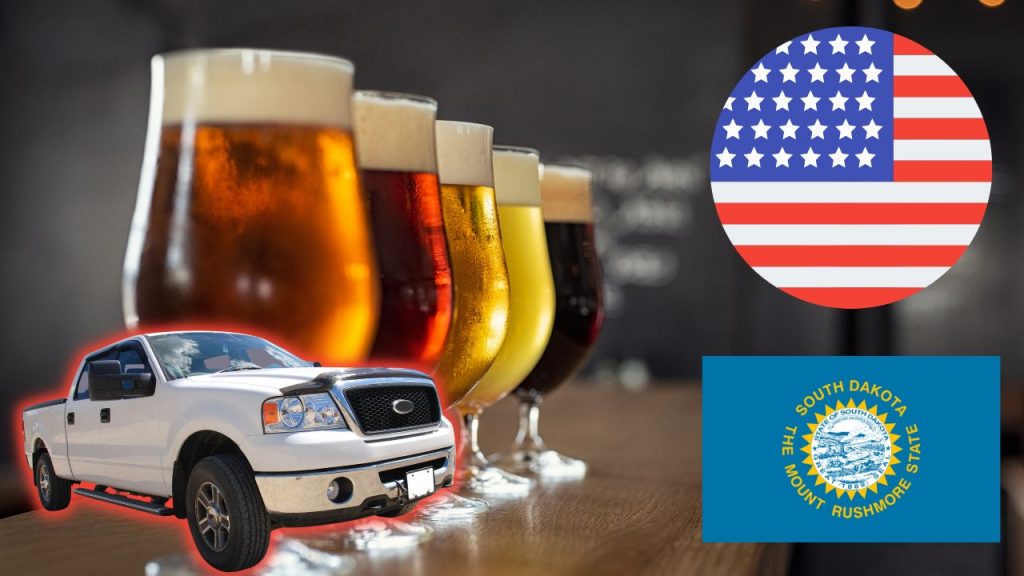
Driving under the influence poses significant risks not only to the driver but also to others on the road. Fortunately, there are several safe and reliable alternatives to driving with a high blood alcohol concentration (BAC) in South Dakota. Here are some recommended strategies to ensure you and your loved ones stay safe:
- Utilize Rideshare Apps: Rideshare services like Uber and Lyft offer a convenient and accessible option to get home safely. With just a few taps on your smartphone, you can arrange for a ride to pick you up from your location. These services are available in many areas, including Sioux Falls and Rapid City, making them a practical choice for avoiding DUI risks.
- Support Local Taxi Companies: For those who prefer traditional taxi services, Sioux Falls and Rapid City offer reliable options. In Sioux Falls, consider calling SIOUX FALLS TAXI SERVICE, and in Rapid City, CITY CAB is a trusted choice. These local taxi companies provide a safe alternative to driving yourself, especially after consuming alcohol.
- Designated Driver Services: If you find yourself in a situation where you’ve driven to a location and consumed alcohol, hiring a designated driver service is a wise choice. Services like The 5 Diamond Livery in Sioux Falls and My Designated Driver LLC in Rapid City offer the convenience of driving you and your vehicle home. This option ensures that both you and your car arrive safely without the need to leave your vehicle unattended. Simply search for “designated driver service” followed by your city’s name to find available services in your area.
By planning ahead and choosing one of these alternatives, you can enjoy your evening out without the worry of compromising your safety or the safety of others. Remember, the cost of a ride home is always less than the potential legal, financial, and emotional costs of a DUI offense. Stay safe and make responsible choices when it comes to alcohol consumption and driving.
Sticking to DUI Laws in South Dakota: Sad Statistics
In 2020, South Dakota witnessed 141 fatal road incidents, with 35% involving drivers with a BAC of 0.08% or higher. To reduce accidents, it’s crucial to avoid drunk driving by opting for alternatives like Uber, taxis, or designated driver services.
The state enforces DUI laws vigorously, with law enforcement actively patrolling and agencies conducting alcohol retailer checks. The judicial system, supported by the Office of Highway Safety, employs innovative measures to combat impaired driving. It’s vital to comply with these laws and consider using a breathalyzer to check your BAC before driving.
For detailed information on DUI regulations, visiting South Dakota’s Department of Public Safety website is recommended. Remember, the safest approach is to avoid driving after consuming alcohol, ensuring the safety of all road users.

